New Mary Tyler Moore documentary features rare footage of the 'Mary Tyler Moore Show' pilot that CBS refused to air
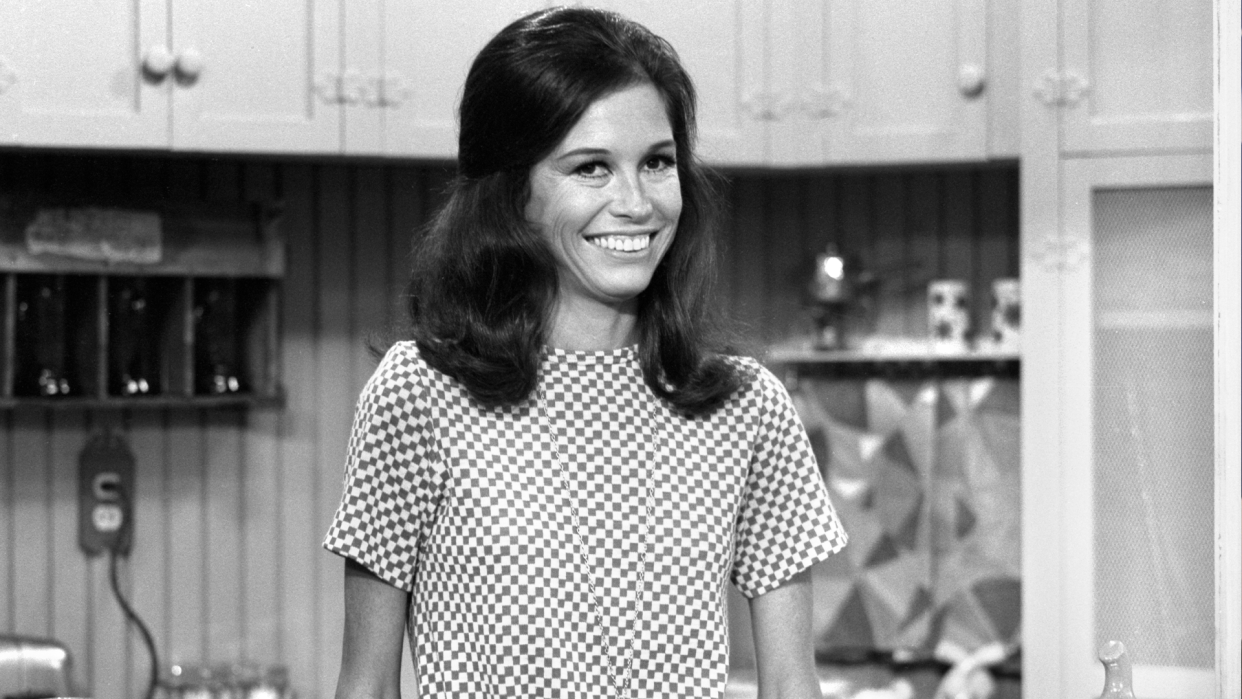
It's hard to conceive of a reality where The Mary Tyler Moore Show wasn't a pioneering television comedy hit. But the new documentary Being Mary Tyler Moore reveals that the late actress' signature CBS sitcom had a bumpy beginning that could have kept it off the airwaves altogether. Premiering on HBO and Max on May 26, the two-hour film features rarely-seen footage of the abandoned Mary Tyler Moore Show test pilot, with familiar faces like Moore and Ed Asner in strikingly different locations and speaking different dialogue. And CBS wasn't happy with the finished product.
"It did not test well, and the network executives came to them and said, 'Fix it,'" Dr. Robert Levine, Moore's widower and an executive producer of Being Mary Tyler Moore, tells Yahoo Entertainment. "That test pilot just didn't work in the way that the show could. Obviously, once they got all the kinks out, it definitely worked. It's quite an extraordinary story the way we tell it in the movie."
Filmed in early 1970, the test pilot features an alternate opening sequence, with Moore's newly single Mary Richards explaining how she ended up in Minneapolis via voiceover. That leads directly into her interview for a job at the local station's Six O'Clock News program run by Asner's spunk-hating producer, Lou Grant. The test pilot also introduces Mary's neighbors Phyllis Lindstrom (Cloris Leachman) and Rhoda Morgenstern (Valerie Harper), who are notably less agreeable in this first go-around.
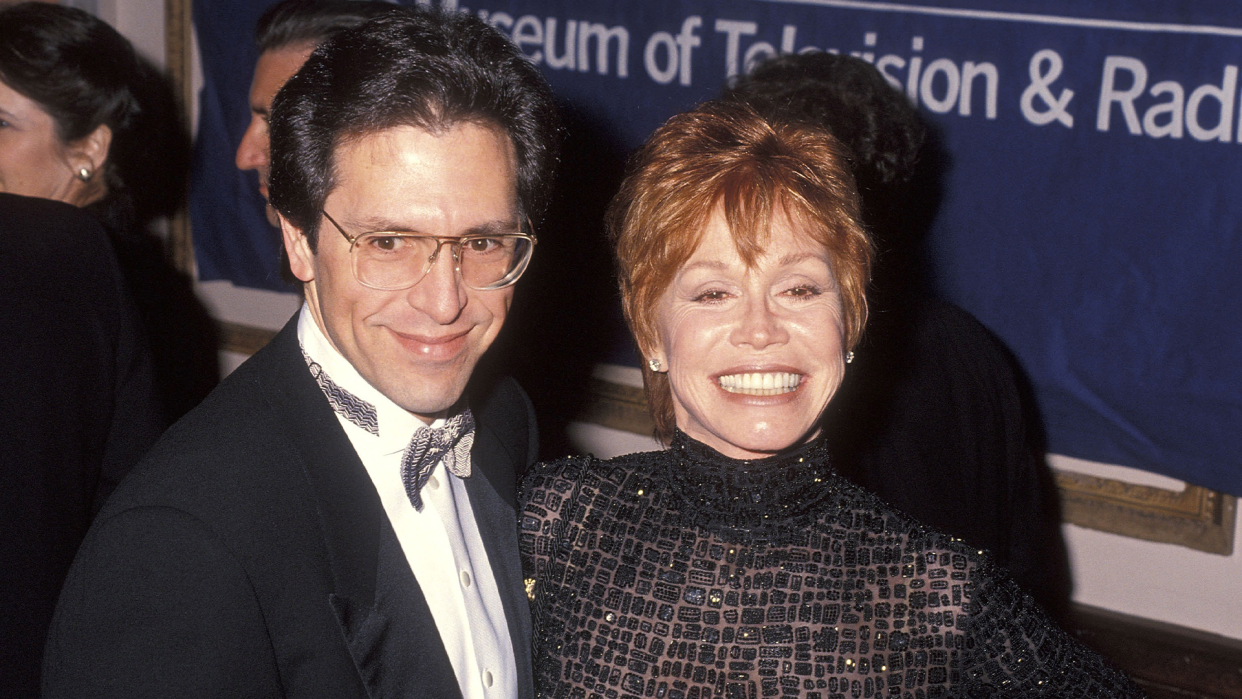
Levine says that the test pilot — which was penned by series creators James L. Brooks and Allan Burns — was filmed under "terrible" conditions that clearly impacted the final product. "It's a little bit flat," he admits. "Clearly the writing is there, but they were growing together as a group and were also in a tough spot [with CBS]. Sometimes these things take time to gel."
After being given the "fix it" order by the network, Brooks, Moore and Grant Tinker — Moore's then-husband and co-founder of her production company, MTM Productions — made nips and tucks to the script and re-shot the test pilot under much better conditions. "They really didn't do too much," Levine says. "As Jim says in the documentary, they shifted some lines around and cut it down, which is what it needed. They also had Phyllis's daughter, Bess, express affection for Rhoda, which automatically made her character more likable."
The final pilot also ditched Moore's narration and let Sonny Curtis's immortal theme song, "Love Is All Around," lead the way. "It sets the tone for what we're about to see," explains Levine. "We're about to see an optimistic story about Mary's positive future and great potential. When you set the table that way, the rest of the show feels that much better."
That rarely-seen test pilot footage is just the tip of the iceberg when it comes to the archival treasures featured in Being Mary Tyler Moore. Levine says that the documentary's creative team — including producers Lena Waithe and Debra Martin Chase — found footage that he wasn't even aware existed. "We'd gone through all the scrapbooks and all the memorabilia," says the cardiologist, who first met the twice-divorced Moore in 1982. They married the following year, and remained together until her death in 2017. "They kept coming back to me asking, 'You mean there are no home videos? You've got nothing else?' I said, 'I think I gave you everything.'"
It turns out that the missing material was close to home — specifically in the basement boiler room of the home that Levine shared with Moore. "Next to the furnace, there was a rack with a bunch of boxes," he remembers. "We opened the boxes and found all these home movies, like our bridal shower and footage of Mary at our farm. I have friends who I used to work with who call that kind of thing a 'God-cidence': a coincidence where there has to be some kind of providence involved. Because why else would all of that stuff have been down in the basement next to the furnace?"
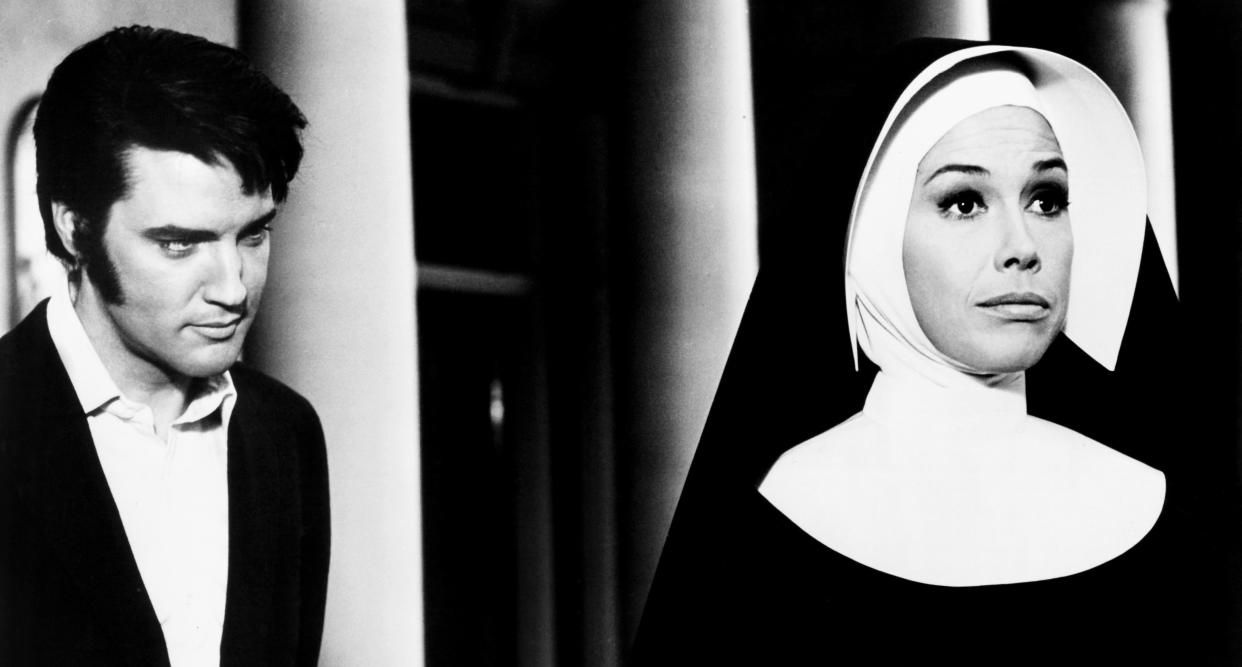
Discoveries like that allowed the makers of Being Mary Tyler Moore to tell the actresses' story entirely through existing footage rather than having to cut away to talking head interviews. Those interviews are heard throughout the film — prominent voices include Moore's collaborators like Brooks and admirers like Julia Louis-Dreyfus — but Moore herself is always front and center. "You feel very close to Mary," Levine says of how the film presents his late wife's life and career.
That career includes milestones like being Elvis Presley's last leading lady. The singer starred in more than 30 feature films released between 1956 and 1969, and Moore appeared in the final one, 1969's Change of Habit, as an undercover nun who falls for Presley's dashing doctor. "Mary always told the story of how Elvis had relations with all of his leading ladies except one," Levine says, laughing. "And then she'd wink and go, 'I know who that one was.' Of course, one time she went on the Oprah show and said, 'What was wrong with me?'"
"She told me that Elvis was such a sweetheart," Levine continues. "He would call every woman 'ma'am,' and she was always shocked at how gracious and kind he was. He was a massive star, but always very cordial."
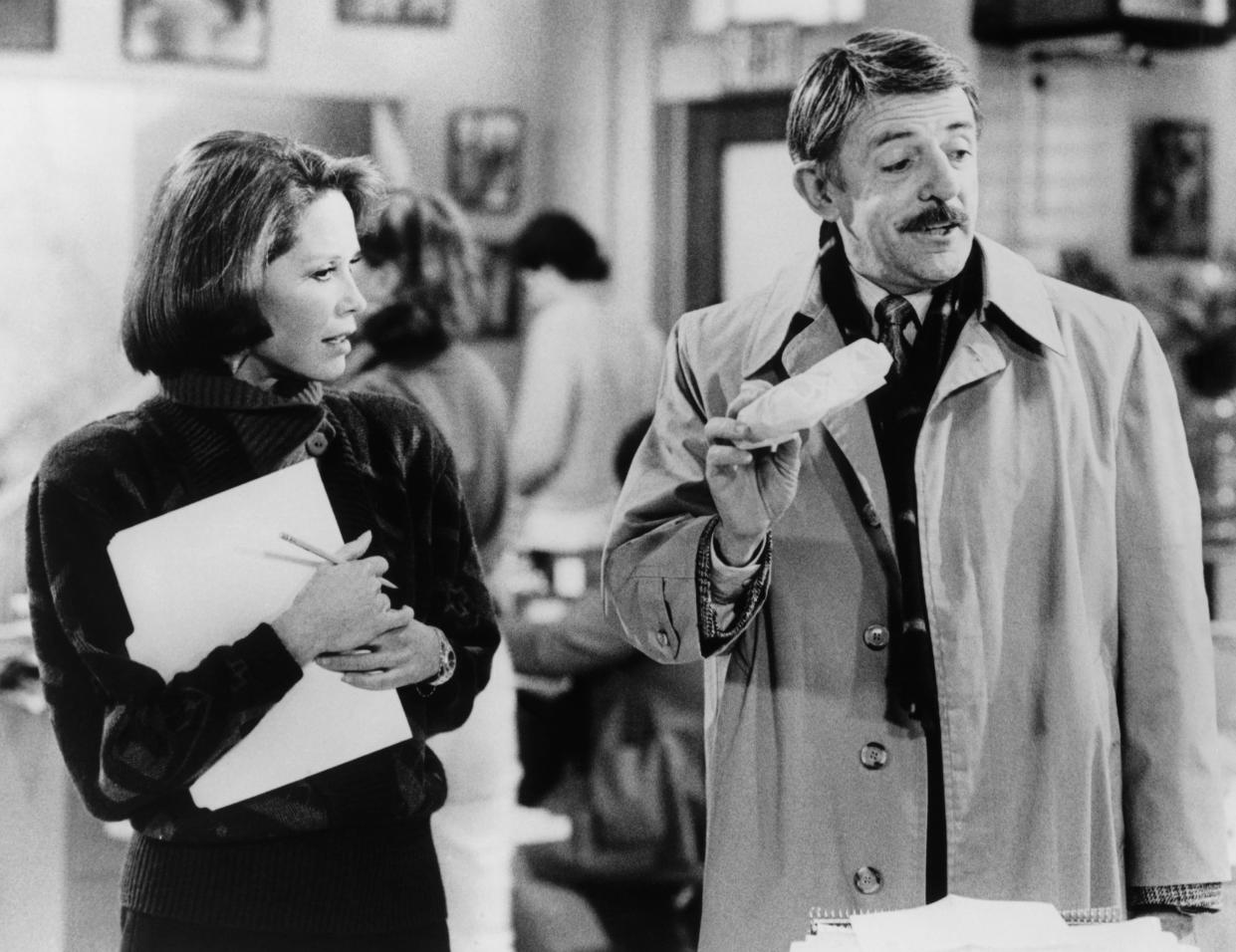
Levine met and married Moore after The Mary Tyler Moore show ended its run, and the actress moved on to other projects, including stints on Broadway and an Oscar-nominated performance in Robert Redford's 1980 drama, Ordinary People. But he was by her side when she returned to television in 1985 with the CBS sitcom, Mary, where she played newly-divorced newspaper journalist, Mary Brenner, opposite John Astin as the paper's theater critic and future Married With Children star, Katey Sagal, as a columnist. Unfortunately, Mary met the fate that The Mary Tyler Moore Show avoided: early cancellation.
"My sense at the time was that she just could not reproduce the chemistry she had with Jim and Allan," Levine recalls, adding that Moore's second attempt at a TV comeback, 1988's Annie McGuire, also failed to last beyond a single season. "They had a unique group of extraordinary talent working together at the right time on The Mary Tyler Moore Show and when she tried Mary and Annie McGuire later on, she just couldn't reproduce that experience. But she did love her cast members: She loved working with Katey, who got her start on that show."
Levine says that Moore was also a big booster of the generation of women who parlayed the success of The Mary Tyler Moore Show into starring in their own sitcoms in the '80s and '90s — performers like Roseanne Barr, Ellen DeGeneres and Debra Messing. She also was a regular viewer of Candice Bergen's Murphy Brown, which premiered the same year as Annie McGuire, but enjoyed a much longer run. "She and Candice had a mutual admiration and Mary always said that she wished that Annie McGuire would do some of the things that Murphy Brown was doing. And Candice said the same thing about Annie McGuire, which I thought was really generous."
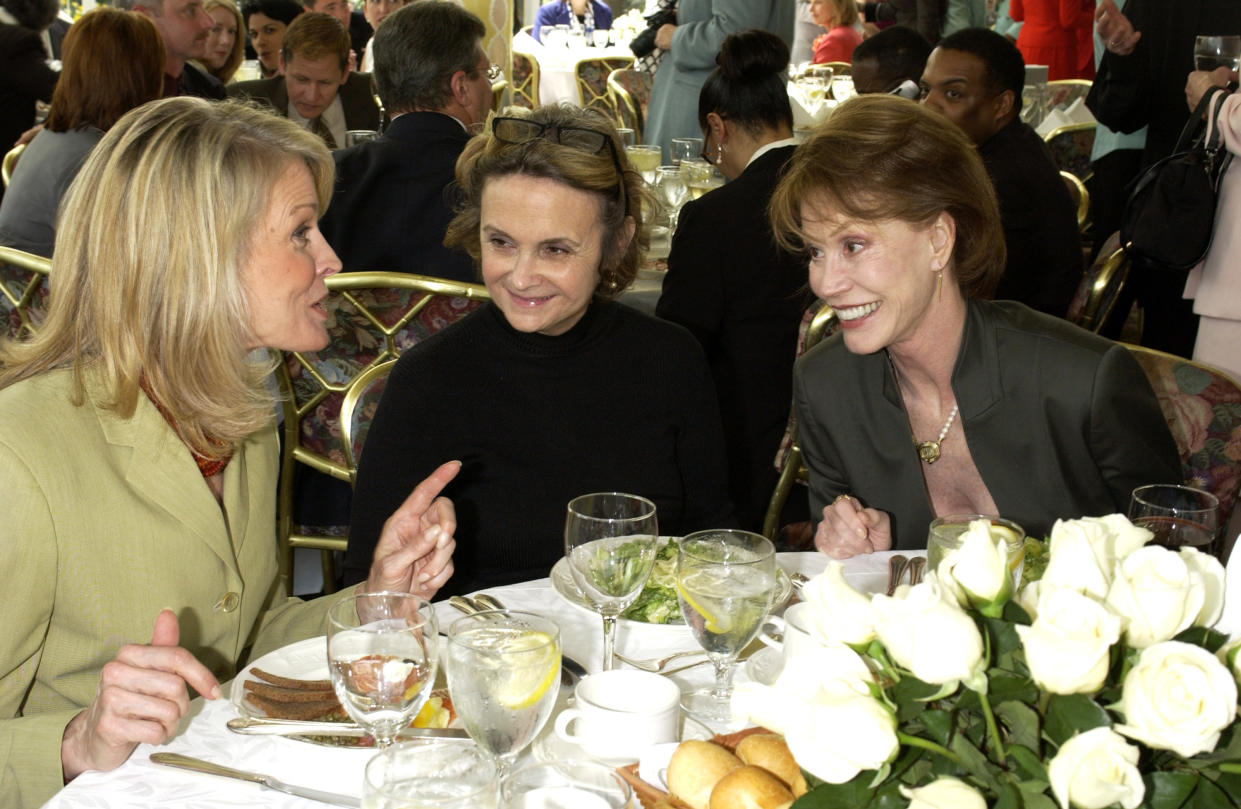
While her TV roles left something to be desired, Levine says that Moore adored her supporting part in David O. Russell's 1996 comedy hit Flirting With Disaster, where she played Ben Stiller's hilariously overbearing adopted mother. "She dyed her hair bright red for that movie," he remembers of how committed his wife was to her performance. "She was all about stretching and taking risks. Mary Richards was a brilliant character, but she had many other sides, including her Flirting With Disaster side."
Off-screen, though, Moore's health issues had already started to take their toll. Diagnosed with Type 1 diabetes in 1969, she became an advocate for diabetes-related causes and research. While shooting Flirting, she developed an ulcer on one of her toes that required an extended hospital stay.
"The last scene they shot for the movie was a Thanksgiving dinner that didn't make the final cut," Levine reveals. "We checked Mary out of the hospital to film the scene, but she still needed intravenous antibiotics. So we brought her to the set with with an IV in place and dressed her in a way so you couldn't see it going into her arm while she was shooting the scene. That tells you about her determination — for her it was always about the work."
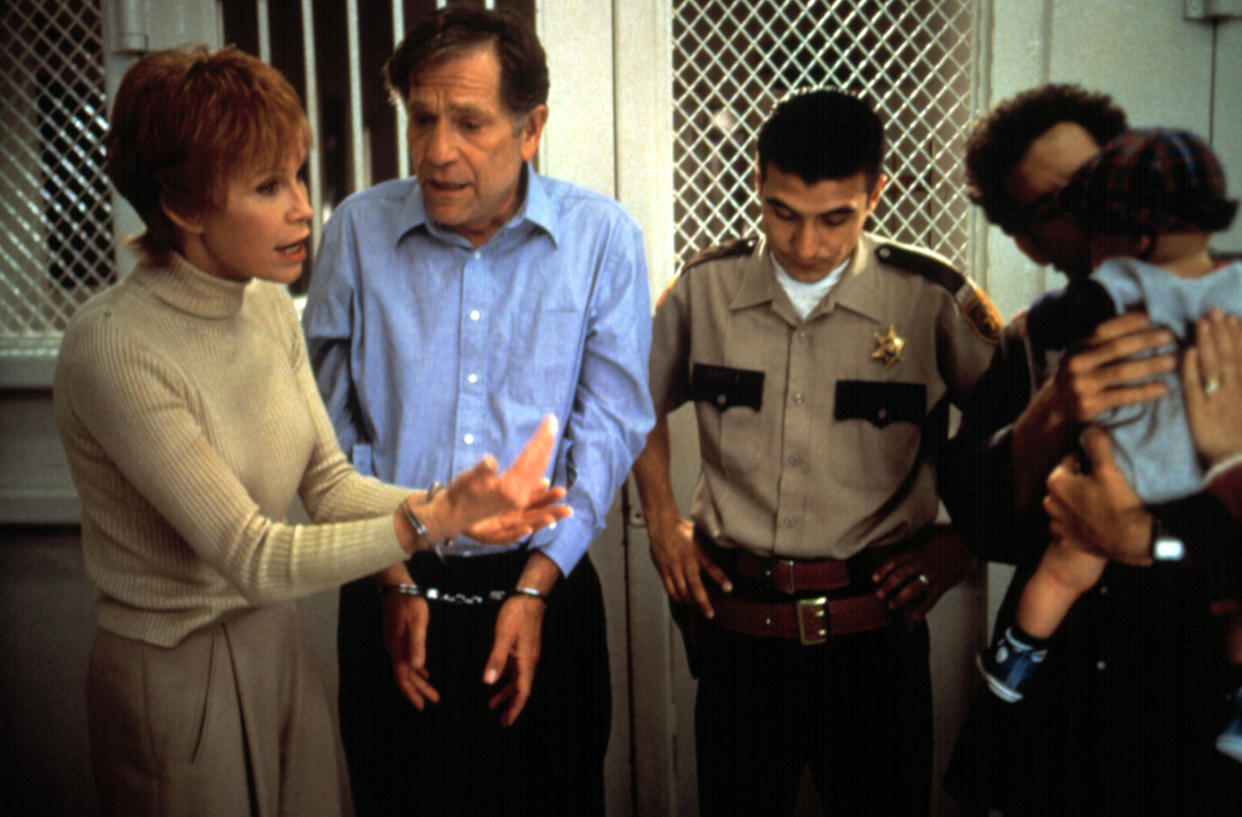
Diabetes directly impacted Moore's vision during the last years of her life with the onset of Diabetic Retinal Disease. Receiving a Lifetime Achievement Award at the 2012 SAG Awards, the actress couldn't walk across the stage to the podium due to her vision loss. "The lights came up and Mary was already at the podium," Levine remembers. "She always said that she had the heart of a dancer, and that was how she defined herself. In her later years, she was unable to dance or even walk across the room safely. Diabetes really stole her joys and her independence — it was really hard for her."
"But she fought through it," Levine adds proudly. "She took a number of tumbles, because she refused to be stopped. Ultimately she accepted help and pulled back, because she really had no choice. But it was very, very hard for her."
To help ease the burden for other individuals afflicted with diabetes-related blindness, Levine has established the Mary Tyler Moore Vision Initiative, which is dedicated to finding a cure for the disease. "Diabetes is the leading cause of blindness in working-age adults around the world," he notes. "It wasn't just my personal experience that motivated me to organize this effort — it's also a serious global problem. So we've organized as a global collective to try and overcome some obstacles and help find cures and preventative strategies."
Being Mary Tyler Moore premieres Friay, May 26 on HBO and Max.
